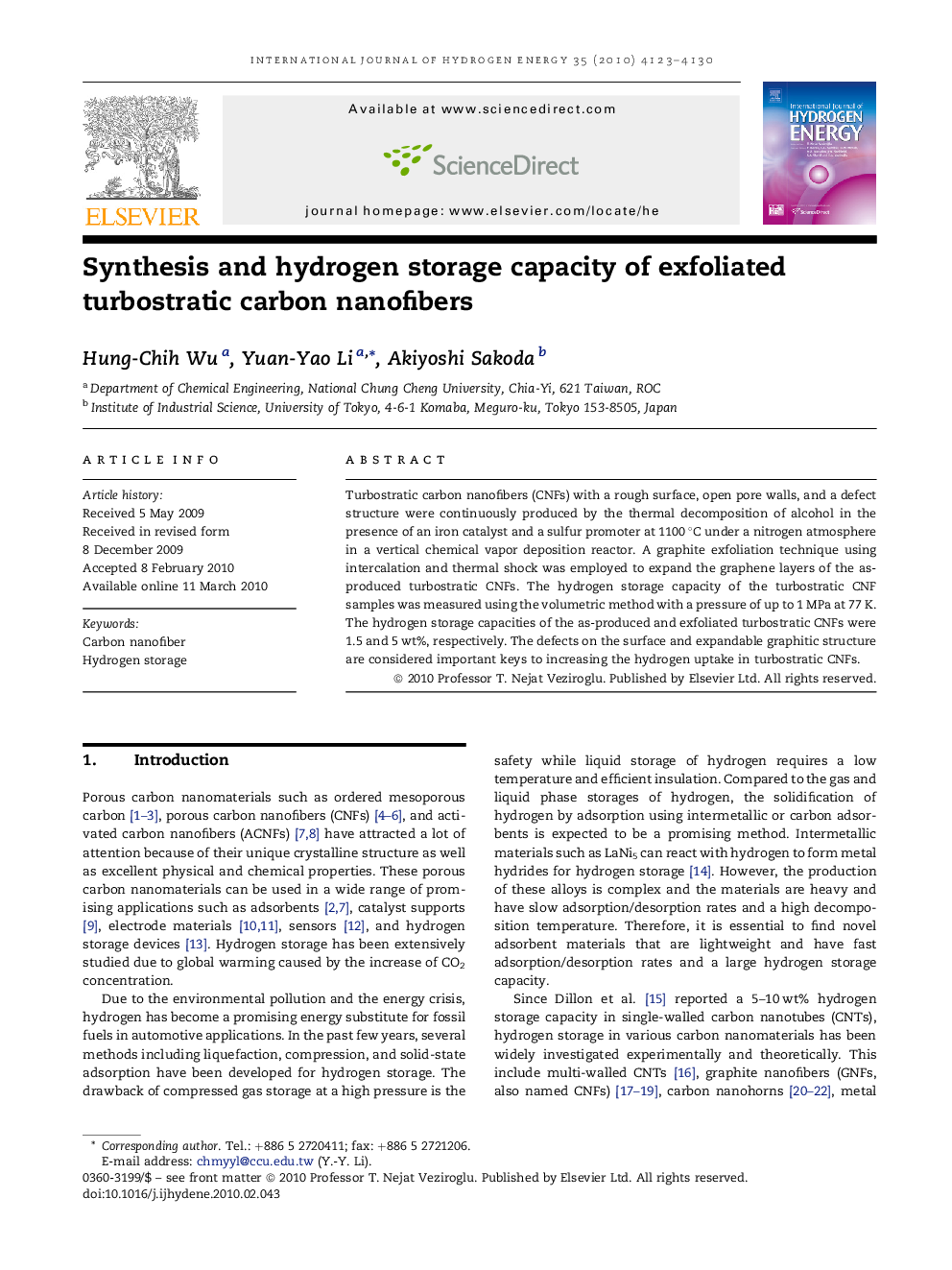| Article ID | Journal | Published Year | Pages | File Type |
|---|---|---|---|---|
| 1273108 | International Journal of Hydrogen Energy | 2010 | 8 Pages |
Turbostratic carbon nanofibers (CNFs) with a rough surface, open pore walls, and a defect structure were continuously produced by the thermal decomposition of alcohol in the presence of an iron catalyst and a sulfur promoter at 1100 °C under a nitrogen atmosphere in a vertical chemical vapor deposition reactor. A graphite exfoliation technique using intercalation and thermal shock was employed to expand the graphene layers of the as-produced turbostratic CNFs. The hydrogen storage capacity of the turbostratic CNF samples was measured using the volumetric method with a pressure of up to 1 MPa at 77 K. The hydrogen storage capacities of the as-produced and exfoliated turbostratic CNFs were 1.5 and 5 wt%, respectively. The defects on the surface and expandable graphitic structure are considered important keys to increasing the hydrogen uptake in turbostratic CNFs.
